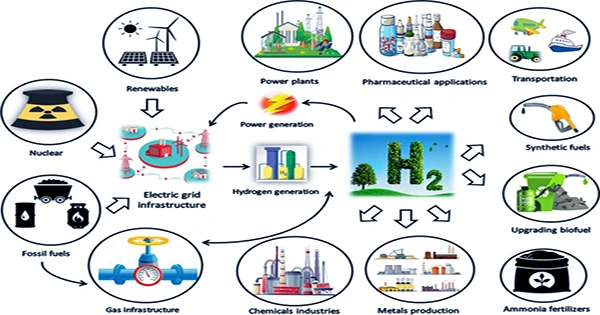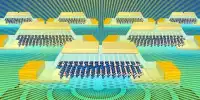Verdagy — from “verde” for green and “agy” for energy — collected $25 million from a slew of strategic energy investors in an attempt to replace a messy, not-so-environmentally-friendly process of generating hydrogen with an industrially scalable solution that emits no toxins into the atmosphere. Steam-methane reforming turns out to be the most prevalent method of creating industrial volumes of hydrogen (it accounts for more than 90% of hydrogen produced in the United States) (SMR). To put it another way, you take methane gas (CH4) and blast it with high-pressure steam (H2O).
The chemistry god’s work their magic, and you end up with a lot of hydrogen (yeah!) and a lot of CO2. If you’ve been reading about climate change, you’ll recall that CO2 is something we’re attempting to keep out of the atmosphere. It’s easy to feel smug as you cruise into the sunset in your sassy Toyota Mirai, Honda Clarity, or Hyundai Nexo, with a sprinkle of water toppling out of the tail pipe and no trace of CO2 in sight. However, unless you know where the hydrogen originated from, it’s likely that instead of being ejected out your car’s tailpipe, it was manufactured in a large plant somewhere.

Whoops. Of course, they could capture and reuse CO2 at the source, but wouldn’t it be wonderful if we didn’t make it in the first place? It’s amusing that you should bring it up. Splitting a water atom is another common method of producing hydrogen. H20 is made up of two hydrogen atoms and one oxygen atom. Wouldn’t it be great if you could just persuade them to gently part ways, releasing oxygen and hydrogen (in case your high school biochemistry is a little out of date: oxygen is good)? In a nutshell, that is exactly what Verdagy is doing. The company can produce enormous volumes of hydrogen by using a massive electrolyzer (ideally) connected to renewable energy sources like solar or wind power.
Other than the aforementioned bio-hazard of “smug grin” on the faces of hydrogen fuel cell vehicle drivers, they do so with no byproducts. A risk I’m ready to overlook in the cause of a cleaner environment. The company’s main innovation is to combine the benefits of alkaline electrolysis (AWE) and proton-exchange membrane (PEM) electrolysis while eliminating the downsides. Verdagy developed a unique membrane-based technique that takes advantage of very large active area cells that can function at high current densities and throughout a wide dynamic operating range. To put it another way:
The cells have a maximum efficiency operating range, but if you have a lot of electricity (for example, because your solar array is producing more power than your industrial applications and/or the power grid can absorb), you can dump it into the electrolysis cells and generate a lot of hydrogen, which can then be used or stored.
“If you look into alkaline water electrolysis (AWE), they employ a diaphragm, which has a physical restriction on how much current density it can handle. Although there may be similar materials and architectures to what we’re doing in terms of cells, their ability to run at higher current densities is limited by the diaphragm. [Proton-Exchange Membrane] [Proton-Exchange Membrane] [Proton-Exchange Marty Neese, CEO of Verdagy, explains that PEM has a restricted active area that the cell can employ.
“Our cells are enormous, and replicating what we accomplish would be extremely difficult.” We have a single-element architectural cell, which implies the anode, cathode, and membrane in the middle are all the same. The cell’s interior architecture is protected by a patent application. The distinction between what we do and what everyone else is how the cell really releases heat, circulates gas and liquid, and how you can govern the circulatory flow within the cell.”















